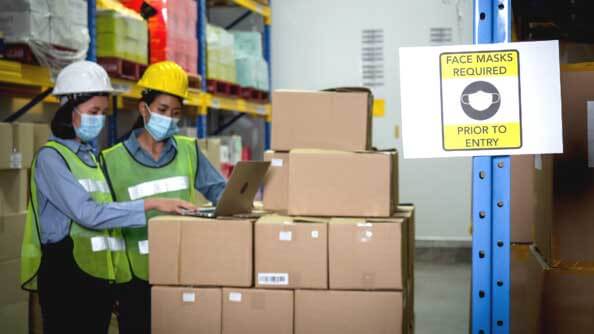It has now been one year since COVID-19 was declared a pandemic. To say that it has been a challenging time is an understatement. Disruptions and restrictions were common. Shortages and delays were the norm. Moving forward, those companies that have found ways to adapt will thrive. A focus on the areas discussed below will become even more valuable as circumstances continue to change.
Prioritizing Employee Health and Safety During COVID
The COVID crisis has taken a toll on everyone. Your workers may be fearful of contracting the virus, concerned with issues at home, and suspicious of losing their jobs. Be supportive of these concerns and offer assurances to the best of your ability. Evaluate your employee handbook. Is the sick time policy flexible enough to allow for quarantines? Are there incentives for staying healthy and on the job? Simone Johnson recently discussed 12 simple ways to keep employees happy without a pay raise in Business News Daily. Satisfied and committed workers are the lifeblood of your company.
Adoption and enforcement of new safety protocols will ensure that your workers have a good chance of staying free of infection. Attention to adequate disinfection and availability of personal protective equipment (PPE) is important. Consider increased use of robotics to allow for social distancing and reduced contact between employees. Streamline your processes for no-touch deliveries.
Optimizing Use of Technology
There has never been a more critical time to enhance digital capabilities. Think about ways that technology can further help you reduce costs. Do you have systems that can enable you to find the lowest cost route, factoring in inspection fees, border protocols, and delivery restrictions? Again, can robotics be better utilized to help with picking, packing, and loading?
The value of the right platforms for inventory management and eCommerce cannot be overstated. Access to real-time data sets will give you insights into supply chains. These data sets can also be used for forecasting. Collaboration with clients will be key to understanding the changing landscape of logistics needs.
Diversifying and Planning
The disruptions to manufacturing that have been seen should be a cause for reevaluation. Maybe it is time to think about diversifying your supply chains and/or clients. Some industries have been hit hard by the pandemic while others have boomed as a result. This may be a chance for you to explore new opportunities. Is your warehouse being used in the most efficient manner? Good inventory management depends on good real estate management.
When looking ahead, travel restrictions and delays are to be expected. A shortage of drivers will continue. Air freight fees will fluctuate dramatically as airlines reallocate space between people and cargo. Distribution of the COVID vaccines will be prioritized over all other commodities. It is a good time to assess alternative delivery routes and modes of transportation. In Logistics Management, Divyesh Bhagat discusses some additional factors to consider as part of the new normal post-COVID.
Although COVID is unpredictable, it is likely to continue to disrupt our world for the foreseeable future. The one thing that is certain is that the logistics industry will remain crucial to delivering the essential goods that keep our economy running. Being resilient and able to adapt quickly in this time of uncertainty will ensure your success.
If you’re looking to make your logistics and fulfillment more predictable (not to mention efficient) look no further than Aero. Get started with this 1-minute survey now.

